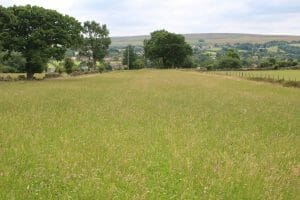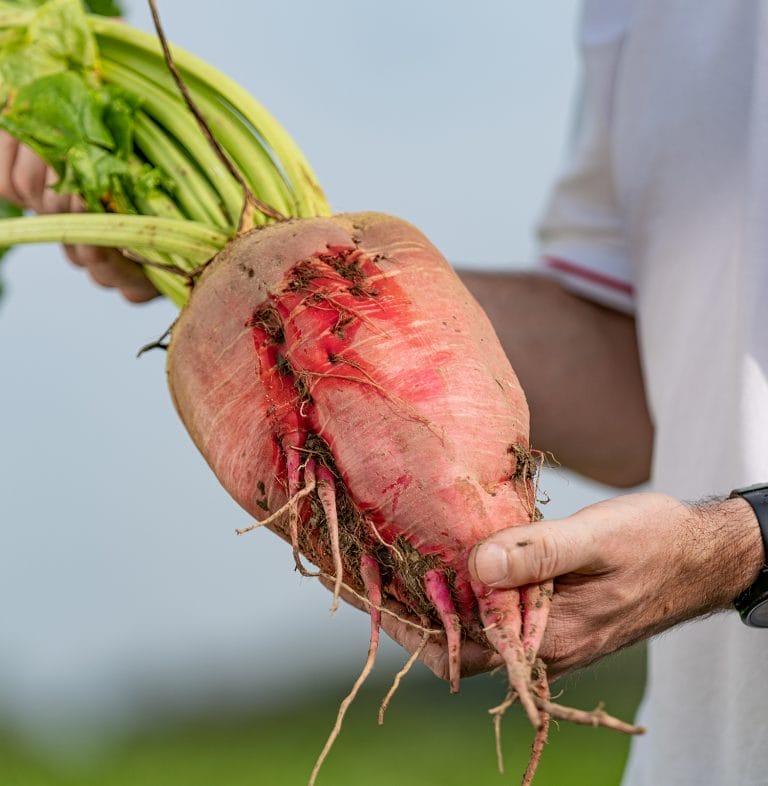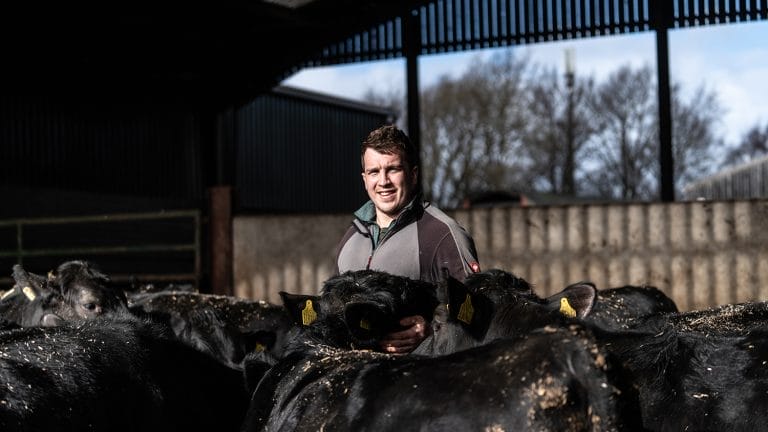
LG Monarch grass seed mixtures come up trumps on North Yorkshire sheep farm
Livestock farmer Andrew Hollings relies on good quality grass for his 1,000 hill ewes and small beef herd situated in Goathland, in the North Yorkshire National Park.
The farm is a mixture of moors and lower lying grass leys. Andrew, who is the third generation of the family to farm at Liberty Hall, has a system designed to suit the area. His Swaledales and Cheviots are hardy enough for the moors. These are crossed with a Leicester tup, and the lambs are reared and finished on the lower land. Lambing starts in early April.

“It’s soon enough up here,” says Andrew, who has noticed a change in conditions during his farming career. “We’ve always worked with the weather not against it,” he adds.
“We’re just 10 miles in land from Whitby and we seem to get stronger winds coming off the North Sea,” he says. “These winds are our biggest challenge. It can be very wet, then the winds pick up and they dry out the ground. Summers are drier and warmer than they were 30 years ago. These conditions are harsh on the grass crops. We have to adapt our system to maintain and improve productivity.”
Mindful that grass must remain ‘king’ on both Liberty Farm’s 93-hectares and the blocks of rented land, Andrew has become more discerning on grass seed mixture choices and he’s started using options that are more suited to conditions and to coping with the challenges, all while improving feed value and productivity.
“I want as much feed value from homegrown forages,” he adds. “I rely mainly on grazed grass and some haylage. In very dry summers, we’ve seen the ground dry up and grass becomes short. In 2022, when it was particularly dry, the feed value in the grass dropped and ewe productivity fell and there were more single lambs.”

The knock-on effect of this changing weather pattern has made Andrew look more carefully at improving grass productivity to safeguard home grown forage supplies. And it’s seen a move to better quality grass seed and multispecies mixtures.
He’s taken some advice from BATA’s agronomist Rose Thompson, and in 2021, he moved to using LG Monarch mixtures; partly because their range has mixtures designed for specific environments and purposes and also because the mixtures, designed by seed breeding company Limagrain, have been tried-and-tested in UK conditions.
“I look to reseed 15 to 20 acres (six to eight hectares) a year,” adds Andrew. “Grass is the cheapest feed we have. If I can improve the quality, it pays dividends.”
He opted for LG Monarch FlexiScot, which is a long-term mixture with highly productive tetraploid and diploid rye grasses, for early growth, and Timothy and white clover varieties that mature in mid-summer and offer some drought resistance. 
This mixture has excellent winter hardiness, and it has been tested successfully, across Scotland and Northern England.
Andrew directly drilled the Flexiscot seed after a crop of stubble turnips which were grown as a break crop. “We put plenty of muck on the land and a bit of fertiliser when we shut it up – this is hungry land.”
In fact, Andrew soil tests the land every year. “It’s vital that we get the pH right – it’s acidic soil and we need to lime it regularly, applying about 3t/acre (1.5t/ha).”
The resulting crop was highly successful and produced a dense sward that came out very well when analysed as part of the farm’s Flock Health Plan. “It’s a mixture that I will continue with – the yield and quality in year one and two has been phenomenal.”
Sheep at Liberty Hall graze the lower-lying grass swards until mid-May when they are closed up for six weeks before cutting for haylage for feeding ewes in January to March when there’s no feed value in neither the grass nor heather.
“I’m really pleased with the amount of grass we get off it,” he adds. “The swards are yielding very well with good quality grass and they’re lasting well through summer. This mixture is a big improvement on the previous ones.”
Another mixture Andrew introduced just recently is LG Monarch Multi-species. This medium-term herbal ley grazing mixture includes later perennial ryegrass, Timothy, red and white clover, chicory, sainfoin, fescues and plantain. The legume varieties reduce fertiliser input requirements and drought resistant species see the crop thriving during summer.
 “I sowed 13-acres (5-ha) in mid-September 2022 – just power-harrowed the field and disced in the seed. It grew well. It didn’t need fertiliser, there were no growth checks. It was ready for grazing in spring and the sward remained very green throughout the summer.
“I sowed 13-acres (5-ha) in mid-September 2022 – just power-harrowed the field and disced in the seed. It grew well. It didn’t need fertiliser, there were no growth checks. It was ready for grazing in spring and the sward remained very green throughout the summer.
“In fact, it grew so vigorously early in the season, that we had to cut and bale some. The aftermath went on to make excellent grazing right through summer for the lambs. We’ve grown more multicut now – it’s an ideal mixture for our lower-lying fields.
“These improved mixtures prove that it’s not what the grass seed costs, but it’s what it does that’s important.”
IDEAL FEED FOR SHEEP
Limagrain forage crop account manager, Henry Louth, says that Mr Hollings’s experience with specific LG Monarch grass seed mixtures demonstrate the mixture’s potential to work well in harsher conditions. 
“This makes them ideal for upland sheep farmers,” he says.
“Limagrain promotes its LG Monarch range, particularly the Flexiscot, Multicut and Multigraze mixtures to sheep farmers. Not only do they grow well, even in less than perfect conditions, they provide high feed value. Sheep and cattle also do particularly well on these forages.”
He is also seeing more interest in the Monarch Multi-species mixture. “This is ideal for low-input grazing, and it provides a grazing crop throughout summer and in drier conditions. As the grass growth slows down, other varieties in the mixture, like chicory, keep growing.”


































